Composition
May 21, 2016 20:25:28 #
Hi Folks - I have spent way too much time looking out through the lens and not enough time looking back into my experience base. I am woefully weak in composition basics and advanced aspects of composition and would like advice on resources you folks have cherished concerning composition. Much like some of the great references for exposure (Perfect Exposure by Michael Freeman or The Optimum Digital Exposure by Bob DiNatale) there must be great references for the art of composition. Please share your favorites. Suggestions that I take some educational classes probably would be very beneficial, but that is not a practical option right now. Are there websites, books, youtube possibilities? There must be. What are your "go to" sources for composition inspiration? I have Googled the Net and plan to continue that, but specifically, I am interested in how you all got your skills honed.
May 21, 2016 21:59:01 #
folkus wrote:
Hi Folks - I have spent way too much time looking ... (show quote)
Composition is simply seeing. Exactly what are you seeing in the lens you've been looking through?
May 21, 2016 22:09:47 #
folkus wrote:
Are there websites, books, youtube possibilities? There must be. What are your "go to" sources for composition inspiration?
Different people learn in different ways... but generally something like composition has to be learned about in one way, and then implementation is learned in a different way.
That's because good composition is a very complex subject that is slow tedious study material, but actually shooting pictures is quick and done by reflex. So studying the psychology of visual perception to understand what causes human reactions to components of composition (i.e. the information you get from "websites, books, youtube" etc) is half the method, and development of a reflex from practicing the implementation of each significant part by spotting the right geometry and advantageously using it within the framing of a photograph, is the other.
Rudolf Arnheim (1904-2007) was a perceptual psychologist who studied how visual symbols cause emotional responses. He wrote something like 15 books relating to art of different kinds. In 1954 he published the classic text, "Art and Visual Perception: A Psychology of the Creative Eye". He republished a totally revised edition in 1974.
Fortunately, today that text is available free online.
http://monoskop.org/images/e/e7/Arnheim_Rudolf_Art_and_Visual_Perception_1974.pdf
You will also want to read an essay written in 1971 titled "Entropy and Art",
http://www.kenb.ca/z-aakkozzll/pdf/arnheim.pdf
And perhaps read the Wiki page about Arnheim to better understand his work,
http://en.wikipedia.org/wiki/Rudolf_Arnheim
Here is a quote from the introduction in "Entropy and Art" that has great significance,
When nothing superfluous is included and nothing indispensable
left out, one can understand the interrelation of the whole and
its parts, as well as the hierarchic scale of importance and
power by which some structural features are dominant, others
subordinate.
In "Art and Visual Perception" he shows with examples and diagrams what makes something superfluous or indispensable, and how to scale interrelations to effect a whole that is greater than the parts and produce effective images. (It's called Gestalt Theory.)
That is the theory you want to study. Implementing the examples in real life is what needs practice to get the desired results.
May 21, 2016 22:34:15 #
I recommend Michael Freeman's book 'The Photographer's eye: A Graphic Guide'. This book skips the narrative explanations of his first book and concentrates on examples. There is literally a lesson on every page. And enough inspiration to get you back behind your camera.
Cheers, Don
Cheers, Don
May 21, 2016 22:46:28 #
mwsilvers
Loc: Central New Jersey
davidrb wrote:
Composition is simply seeing. Exactly what are you seeing in the lens you've been looking through?
Perhaps you were being factious, but good composition is most definitely not "simply seeing". If you believe it is then perhaps you might consider getting a book on the subject yourself.
May 21, 2016 23:38:04 #
You say: "I am woefully weak in composition basics and advanced aspects of composition."
This part of imagery, composition, has to do at bottom with visual balance within the frame for a satisfying visual experience from viewing the given image.
Achieving this balance mainly involves the relation of the parts of the composition to each other. Applying the Rule of Thirds provides a basic balance to an image.
But internally, the image may contain parts that add or subtract from visual balance due to their weight in perception. For example, a human face in an image will always attract the eye of the viewer as a natural response. Thus, this element may distract from the main subject.
I could go on, but I believe you may gain the sense here that this subject demands your undivided attention. Let me please suggest, however, that you keep in mind that composition always has to do with how you or another perceive the image as a whole. That said, yes, principles, concepts, rules, and techniques can guide you to produce a well-composed image.
Others here may steer you to sources that will guide you to learn and use composition. Stay with it because a sound composition will dramatically improve your photographs.
Good luck.
This part of imagery, composition, has to do at bottom with visual balance within the frame for a satisfying visual experience from viewing the given image.
Achieving this balance mainly involves the relation of the parts of the composition to each other. Applying the Rule of Thirds provides a basic balance to an image.
But internally, the image may contain parts that add or subtract from visual balance due to their weight in perception. For example, a human face in an image will always attract the eye of the viewer as a natural response. Thus, this element may distract from the main subject.
I could go on, but I believe you may gain the sense here that this subject demands your undivided attention. Let me please suggest, however, that you keep in mind that composition always has to do with how you or another perceive the image as a whole. That said, yes, principles, concepts, rules, and techniques can guide you to produce a well-composed image.
Others here may steer you to sources that will guide you to learn and use composition. Stay with it because a sound composition will dramatically improve your photographs.
Good luck.
folkus wrote:
Hi Folks - I have spent way too much time looking ... (show quote)
May 22, 2016 00:08:39 #
folkus wrote:
Hi Folks - I have spent way too much time looking ... (show quote)
+++++++++++++++++++++++++++++++++++++++++++
A good way to learn how to compose nicely would be for you to look at framed paintings or framed photographs that you really like and when you are looking at them, pay close attention to just what it is about them that makes you like them. As an example, let's say that you are looking at an oil painting of a dated rural scene that you absolutely love and the painting depicts a farmer and his mule plowing a field. Then, pay close attention to where the farmer and his mule are located in the scene. Are they located in the center of the painting? Nope, they are not ! More than likely, they will be located somewhere in the scene whereby a fence line or a row of trees will lead your eyes to them. Oh, sure, other objects in the painting may be pleasing and attractive to see, but nearly 100% of the time these other objects lend themselves as adjuncts that lead your eyes to the main subject which, in this situation, happens to be the farmer with his old mule pulling the plow. Most often, you will find that award winning photos or award winning paintings will have main subjects located in a scene where intersecting lines meet which are best represented by "the rule of thirds." ~> (Not always, but 99% of the time the rule of thirds or a close semblance thereof has been applied)..
Yes, there are other methods of composition that are pleasing as well and if you do your due diligence, you will begin to see them, understand them, and, then, soon you will on your way to success !
Best Regards,
~ Doug ~
The farmer and his mule is just one example of the appreciation of good composition
May 22, 2016 00:24:06 #
OP - don't feel bad, MOST of us couldn't compose a great shot if our life depended on it. Very few have the "eye"
Personally I go to www.500px.com to see what real photographers produce. Good luck.
Personally I go to www.500px.com to see what real photographers produce. Good luck.
May 22, 2016 00:52:54 #
Zone-System-Grandpa wrote:
Most often, you will find that award winning photos or award winning paintings will have main subjects located in a scene where intersecting lines meet which are best represented by "the rule of thirds." ~> (Not always, but 99% of the time the rule of thirds or a close semblance thereof has been applied)..
Actually that is a common myth rather than a truth. Look at paintings by the Old Masters and not one of them ever used the Rule Of Thirds (ROT). They implemented symmetry and balance (which ROT destroys). They talked no end about balance and symmetry, and never once mentioned the Rule Of Thirds.
Certainly ROT will provide at least a mediocre level of appeal, and hence is something to understand and to be aware of while composing. One should never use it alone and it should never be implemented by any application of a grid or measuring device. (It requires adjustment by inspection where visually looking at it determines what works best.)
Look for balance and symmetry between visual symbols. Provide leading lines and curves that repeatedly place a viewers eyes on a path or at an object of interest. Balance is achieved with numerous characteristics manipulated for effect. Color, contrast, brightness, smoothness and size are just the most obvious...
Another essential ingredient is intangible. Entropy, or the peaking energy of a scene! As Cartier-Bresson said, look for the geometry that gives the image great composition... and then wait for the right moment when the energy of the scene peaks.
May 22, 2016 01:29:29 #
Let me preface this by saying that I am by no means a professional nor an expert. I'm a hack who is trying to learn as much as I can. I have read books and watched videos on the subject, and made lots of attempts to implement some of what I'm trying to learn. One of the best (simple) tutorials on composition came as part of a DVD (download) I bought from Michael Andrew. It was actually a crash course on my new Canon camera, but had a section on composition. When I go out to shoot pictures now, I try to remember some of these points and intentionally try to employ them (and I'm not fooling myself into thinking I'm any good at it, but hopefully someday I will be). I'll share here some of those concepts I've learned and my (poor) attempts to implement them:
1. Framing: Making a picture interesting by framing the subject somehow. Could be a doorway, a window, trees, etc. (See My attempt in Pic #1 below where I attempt to frame the scene, including the Navy ship, with the trunk and branches of a tree)
2. Rule of Thirds. The basic concept of dividing your picture into a tic-tac-toe grid and visually placing a point of interest at or near one of the intersections. In picture 2, I tried to get the guy with the binoculars with the binocs about at the intersection of the tic tac toe grid, with the other guys in the background to balance it out. In picture 3 (taken past Friday at Tent Rocks), I intentionally framed my wife's head about in the left third of the picture, with the balanced rock formation she points too in the right-third. But, as pointed out by a previous poster, the rule of thirds is not something painters use and not hard and fast. But it was a concept in the tutorial I mentioned, so I thought I would show a couple examples. Definitely beats taking a snapshot with the subject straight on.
3. Shapes (try to find shapes to make the picture interesting). On my #4, I just liked the arched shape of the church door, with the lonely little wall lamp which made it balance a bit.
4. Angle of attack. Changing the angle of attack can help a picture. For example, in # 5 I had my wife framed in the canyon walls, but got down low and shot in an upward direction. I just wanted something more interesting than a straight-on head shot. In # 6, rather than just shoot the little boy from my perspective (standing up), with mom's permission, I crouched down and got on his level and asked him to make his "mean face".
5. Sense of Depth (walls, roads, other visual cues that give picture sense of depth). In #7, I was trying to use the painted poles (Old Town, Santa Fe) to provide a sense of depth (Larger to smaller with distance) and that ultimately draws the eye to the open doorway that leads into the courtyard.
6. Backgrounds (Look at background and ask if anything distractive in picture and look for backgrounds that would add interest or color). In #8, I was playing with a new ND filter and thought a softened waterfall would make a nice background for a picture of a friend.
7. Textures. I always look for interesting textures when I'm out and about. Like the Tent Rocks Canyon wall in #8
8. Distance - easy concept where you control size of subject based on distance. In #9 below, I used wide angle and had wife intentionally far enough away to show the relative large size of the narrow canyon we were about to enter.
(Don't know why #7 need up out of order as the last picture)
These are just a few concepts I'm trying to learn. I imagine someone with a good eye can combine several of these concepts onto one great shot. I'm happy if I can remember to get one or two at a time.
1. Framing: Making a picture interesting by framing the subject somehow. Could be a doorway, a window, trees, etc. (See My attempt in Pic #1 below where I attempt to frame the scene, including the Navy ship, with the trunk and branches of a tree)
2. Rule of Thirds. The basic concept of dividing your picture into a tic-tac-toe grid and visually placing a point of interest at or near one of the intersections. In picture 2, I tried to get the guy with the binoculars with the binocs about at the intersection of the tic tac toe grid, with the other guys in the background to balance it out. In picture 3 (taken past Friday at Tent Rocks), I intentionally framed my wife's head about in the left third of the picture, with the balanced rock formation she points too in the right-third. But, as pointed out by a previous poster, the rule of thirds is not something painters use and not hard and fast. But it was a concept in the tutorial I mentioned, so I thought I would show a couple examples. Definitely beats taking a snapshot with the subject straight on.
3. Shapes (try to find shapes to make the picture interesting). On my #4, I just liked the arched shape of the church door, with the lonely little wall lamp which made it balance a bit.
4. Angle of attack. Changing the angle of attack can help a picture. For example, in # 5 I had my wife framed in the canyon walls, but got down low and shot in an upward direction. I just wanted something more interesting than a straight-on head shot. In # 6, rather than just shoot the little boy from my perspective (standing up), with mom's permission, I crouched down and got on his level and asked him to make his "mean face".
5. Sense of Depth (walls, roads, other visual cues that give picture sense of depth). In #7, I was trying to use the painted poles (Old Town, Santa Fe) to provide a sense of depth (Larger to smaller with distance) and that ultimately draws the eye to the open doorway that leads into the courtyard.
6. Backgrounds (Look at background and ask if anything distractive in picture and look for backgrounds that would add interest or color). In #8, I was playing with a new ND filter and thought a softened waterfall would make a nice background for a picture of a friend.
7. Textures. I always look for interesting textures when I'm out and about. Like the Tent Rocks Canyon wall in #8
8. Distance - easy concept where you control size of subject based on distance. In #9 below, I used wide angle and had wife intentionally far enough away to show the relative large size of the narrow canyon we were about to enter.
(Don't know why #7 need up out of order as the last picture)
These are just a few concepts I'm trying to learn. I imagine someone with a good eye can combine several of these concepts onto one great shot. I'm happy if I can remember to get one or two at a time.
#1 Framing - used tree to frame scene

#2 Guy's binoculars are about at the intersection on 2/3rds
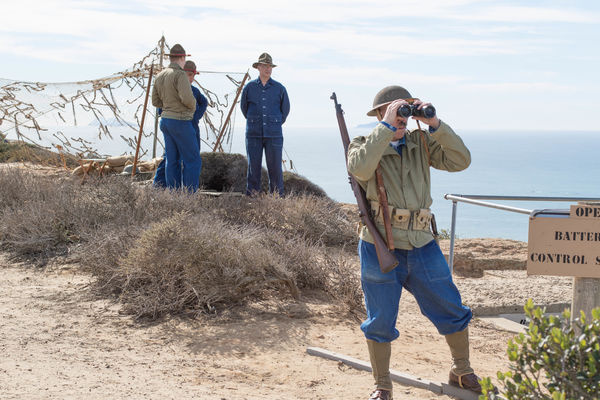
#3 Wife on the left third, object she pints too at right 1/3
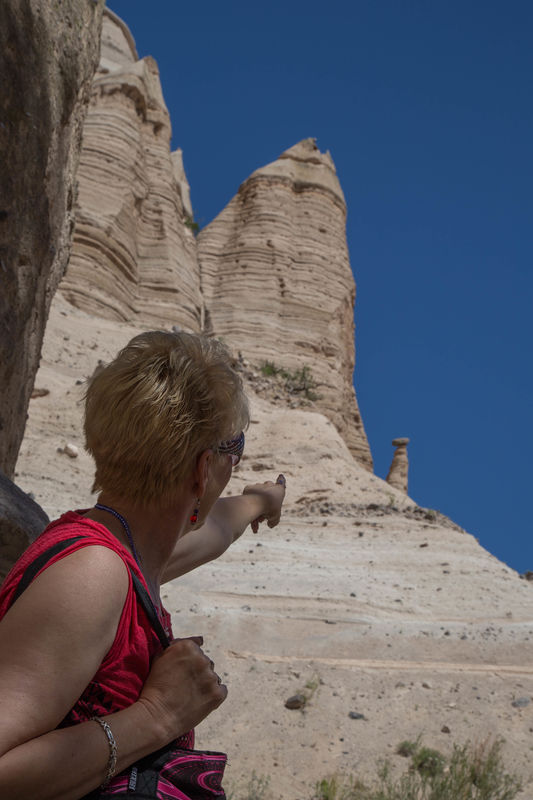
#4 Shapes
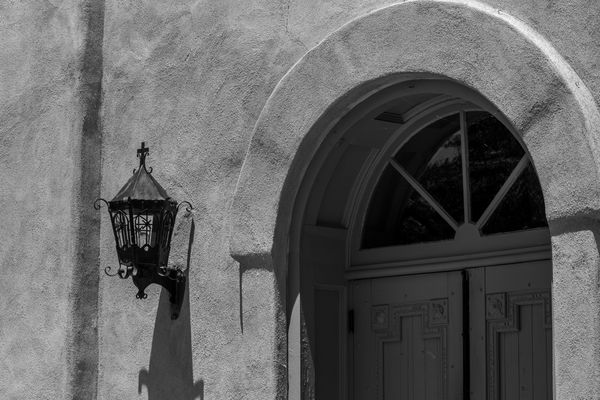
#5 Change angle of attack
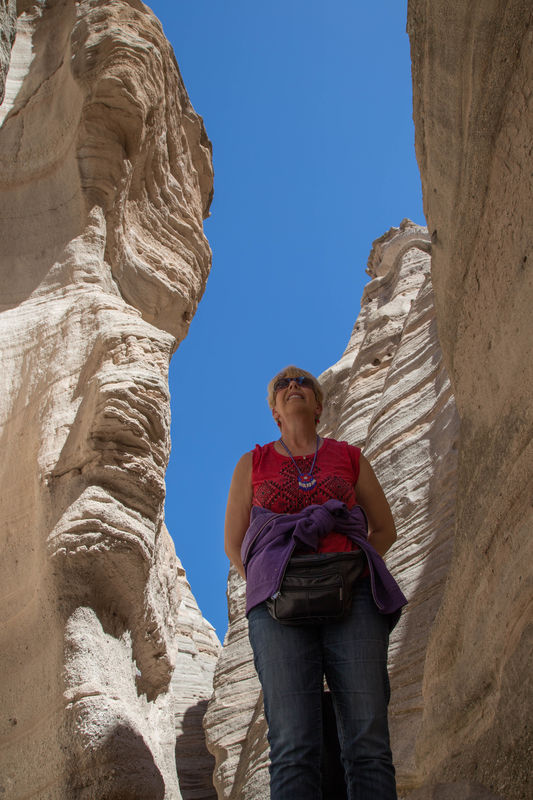
#6 Kids - get on their level

#8 Background. Look for interesting stuff and remove distractions (beer can, etc)
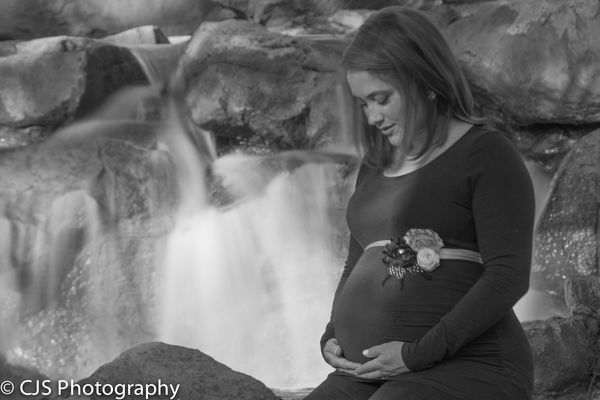
#9. Look for interesting textures - use as background
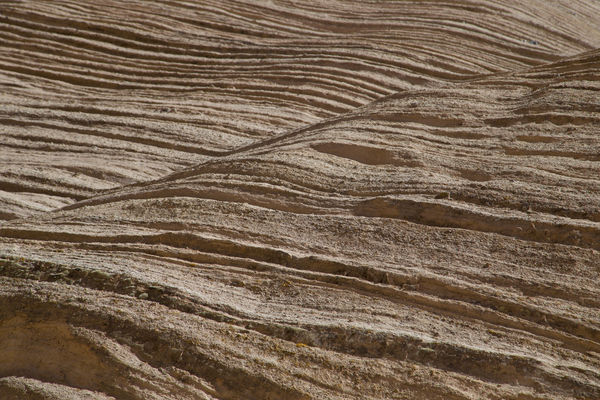
#10 Distance for perspective
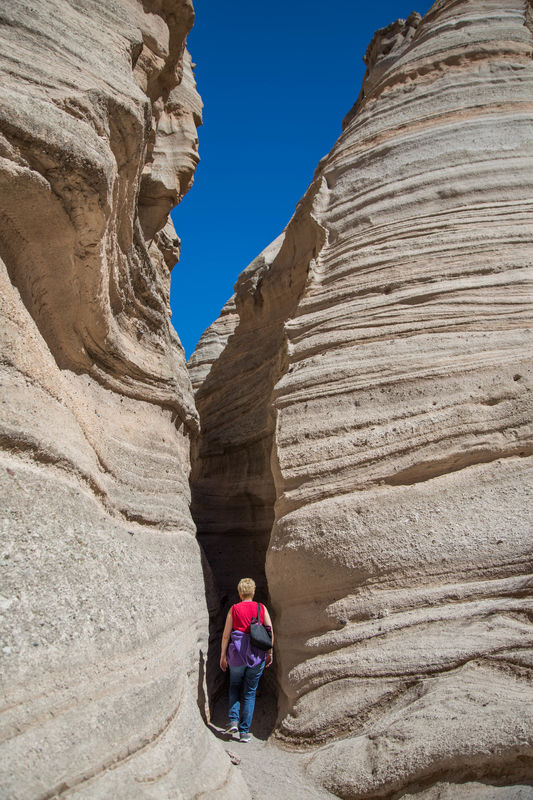
#7 Sense of depth
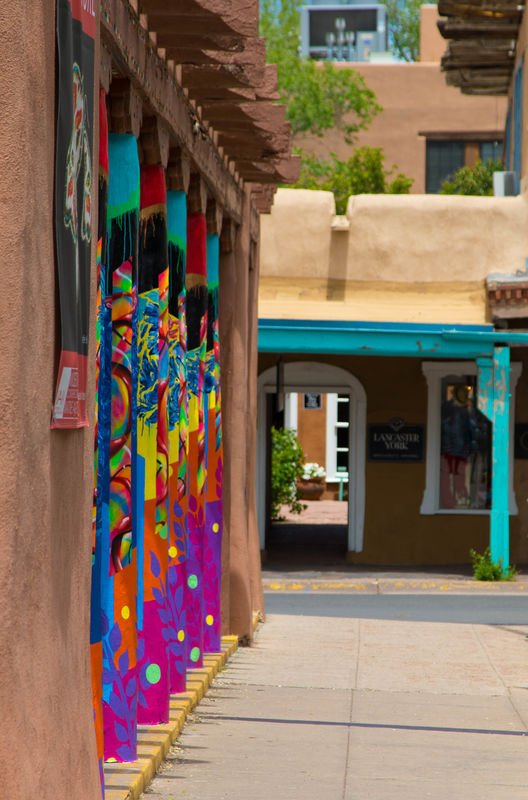
May 22, 2016 02:14:03 #
Apaflo wrote:
Actually that is a common myth rather than a truth... (show quote)
+++++++++++++++++++++++++++++++++++++++++
Thanks for the response and I hope the OP doesn't mind you and I corresponding via using his original thread! :) For starters, I fully understand why you would disagree with me and that is because your favorite form of photography is Street Photography", much like a photojournalistic style of photo print, which I seriously doubt produces many photographs which end up being framed and hanging in galleries? Anyway, perhaps, you may have misunderstood that which I was trying to convey to the OP.. To begin, I did say that there are other methods of composition than the rule of thirds and in no way did I imply that the old masters even thought of the terminology that we moderns gave to composition known as (THE RULE OF THIRDS) and I have no doubts whatsoever that someone in the 20th century came up with the term we know as being "the rule of thirds", however; when looking at some of the paintings of the masters, it can be seen that the rule of thirds is often befitting.. Lastly, the reason that I had selected the rule of thirds as a topic for discussion with the OP was because it was easy to explain the rule of thirds to him and once he digests that which I had said about the rule of thirds, I would wager you that it will be easy for him to comprehend.. Then, again, I seriously doubt if the OP will find the information you have provided about composition easy for him to understand simply because that which you have stated are more or less philosophical applications given unto the understanding of composition and they, my friend, will assuredly be far more difficult for someone that struggles with composition to begin to understand ! I suggest that you and I let the OP be the judge of which one of our suggestions make more sense to him and I will wager you that my explanation will get his vote! :) Just sayin' !!!
May 22, 2016 02:35:30 #
Zone-System-Grandpa wrote:
+++++++++++++++++++++++++++++++++++++++++ br br &... (show quote)
The way I see it, ROT and all the other compositional elements are just that - elements; to be used or not as the situation would lend itself. I don't always concern myself with the ROT in a picture, but if the composition lends itself to it, then I do. I don't get a micrometer out and measure it to the Nth degree, but use it as a general guide - sometimes. It is the possibilities with all the different variables, that I think makes photography so interesting and, for me, so much fun.
May 22, 2016 04:14:17 #
No 9 is great and the last one is good. The key is less clutter. Do not include tree branches ever. Also few of the shots have a human in it and becomes the focus. Don't do that. Whole door would be much better.
Basil wrote:
Let me preface this by saying that I am by no mean... (show quote)
May 22, 2016 04:24:03 #
If you want to take a look at composition from a completely different approach, do a google search for "contemplative photography"
You can start with this blog:
http://seeingfresh.com/
Traditionalists won't understand, but those who approach their photography using contemplative techniques produce some stunning and memorable images.
One of the best lines I read regarding composition was written by Edward Weston - "Consulting the rules of composition before taking a photograph, is like consulting the laws of gravity before going for a walk."
I have seen more "rules-based" compositions that I'd want to see in a lifetime that were truly awful. Some of the best work I have seen broke all the rules.
You can start with this blog:
http://seeingfresh.com/
Traditionalists won't understand, but those who approach their photography using contemplative techniques produce some stunning and memorable images.
One of the best lines I read regarding composition was written by Edward Weston - "Consulting the rules of composition before taking a photograph, is like consulting the laws of gravity before going for a walk."
I have seen more "rules-based" compositions that I'd want to see in a lifetime that were truly awful. Some of the best work I have seen broke all the rules.
May 22, 2016 05:00:56 #
folkus wrote:
Hi Folks - I have spent way too much time looking ... (show quote)
Folkus, some composition can be learned, some you are born with.
I have done several posts on composition that each got quite a bit of participation. Look under my name and go to "topics created", then look for the ones titled, "composition"! One is titled, "beyond the rule of thirds"
There is a lot of info there by some of the better composers here on UHH!!! good luck
SS
If you want to reply, then register here. Registration is free and your account is created instantly, so you can post right away.







